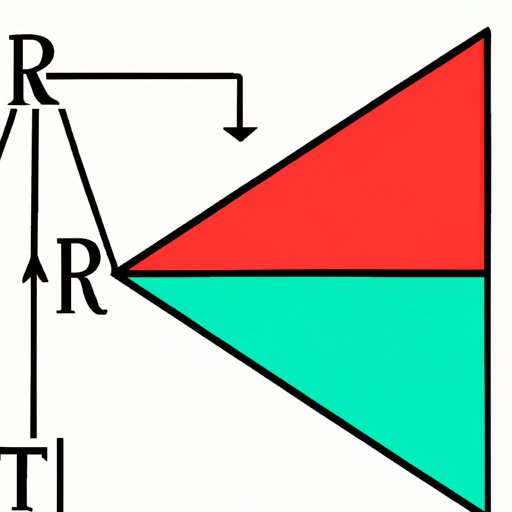
Introduction
One of the fundamental concepts in geometry is the Pythagorean Theorem, which is used to find the hypotenuse of a right triangle. Understanding this concept is essential for anyone studying mathematics, science, or engineering. If you don’t know how to find the hypotenuse of a right triangle, you may struggle with other more complex problems. In this article, we will explore how to find the hypotenuse of a right triangle, using easy-to-understand explanations, clear examples, and useful tips.

The Pythagorean Theorem: A Simple Guide to Finding the Hypotenuse of a Right Triangle
The Pythagorean Theorem is a statement that describes the relationship between the sides of a right triangle. According to this theorem, in any right-angled triangle, the square of the hypotenuse is equal to the sum of the squares of the other two sides. This may seem complicated, but it’s actually quite simple, we just need to break it down.
Step-by-Step: How to Calculate the Hypotenuse of a Right Triangle
If you have identified a right triangle, you can use the Pythagorean theorem to find its hypotenuse. The first step is to label the two sides that form the right angle. Let’s call them A and B. Then we can use the formula:
where c is the hypotenuse and a and b are the lengths of the other two sides.
For example, if we have a right triangle with sides of 3 and 4 units:

using the formula we have:
which simplifies to:
thus
So, the hypotenuse of this right triangle is 5 units.
Discovering the Relationship between the Legs and the Hypotenuse of a Right Triangle
The legs of a right triangle are the two sides that form the right angle. The hypotenuse is the longest side of a right triangle, and it is opposite to the right angle. If we know the length of both legs, we can find the hypotenuse using the Pythagorean theorem. However, there are other ways to calculate the hypotenuse of a right triangle, one of which is trigonometry.
Trigonometry is a branch of mathematics that deals with the relationships between the sides and angles of triangles. It has numerous applications in many fields, including science, engineering, and architecture.
Breaking Down the Math: Finding the Hypotenuse of a Right Triangle
Let’s use another example to illustrate how to use the Pythagorean theorem to find the hypotenuse of a right triangle. Suppose we have a right triangle with legs measuring 6 and 8 units:

using the formula we have:
which simplifies to:
thus
Therefore, the hypotenuse of this right triangle is 10 units.
You can try this with other examples to become more comfortable with the use of the Pythagorean Theorem.
Mastering the Basics: Finding the Hypotenuse of a Right Triangle
Once you have mastered the Pythagorean theorem, it’s essential to memorize it. One way to do this is to practice examples like we have done so far. Another way is to use a mnemonic device, such as the phrase, “A squared plus B squared equals C squared.” You can also make flashcards with examples to help you remember the formula.
Remember, understanding the basics is essential for more complicated mathematical problems. Once you have mastered this concept, it’s time to move on to more advanced material.
A Visual Guide to Understanding Hypotenuse Calculation in Right Triangles
Visual aids can be used to help understand this concept. Here are some examples below:
Example 1:

Example 2:

Using Trigonometry to Find the Hypotenuse of a Right Triangle
There are some cases where you may need to use trigonometry to find the hypotenuse of a right triangle. For example, if you know the length of one leg and one acute angle, you can use trigonometry to find the hypotenuse. The trigonometric functions sine, cosine, and tangent can be used to find the ratio of the sides in a right triangle. Here’s an example:
Suppose you have a right triangle with a leg of 6 units and an acute angle of 30 degrees:

We can use the sine function to find the ratio of the length of the opposite side to the hypotenuse:
Since we know the length of the opposite side is 3 (half of the length of the hypotenuse), we can solve for the hypotenuse:
Therefore, the hypotenuse of this right triangle is 12 units.
Conclusion
Understanding how to find the hypotenuse of a right triangle is essential for anyone studying mathematics, science, or engineering. The Pythagorean theorem provides a simple formula for calculating the hypotenuse of a right triangle. Once you have mastered this concept, you can use trigonometry to find the hypotenuse in more complex cases. Practice is key to mastering this skill, so work through examples and use visual aids to help you understand. Remember, mastering the basics is the key to success in more advanced mathematical concepts.





